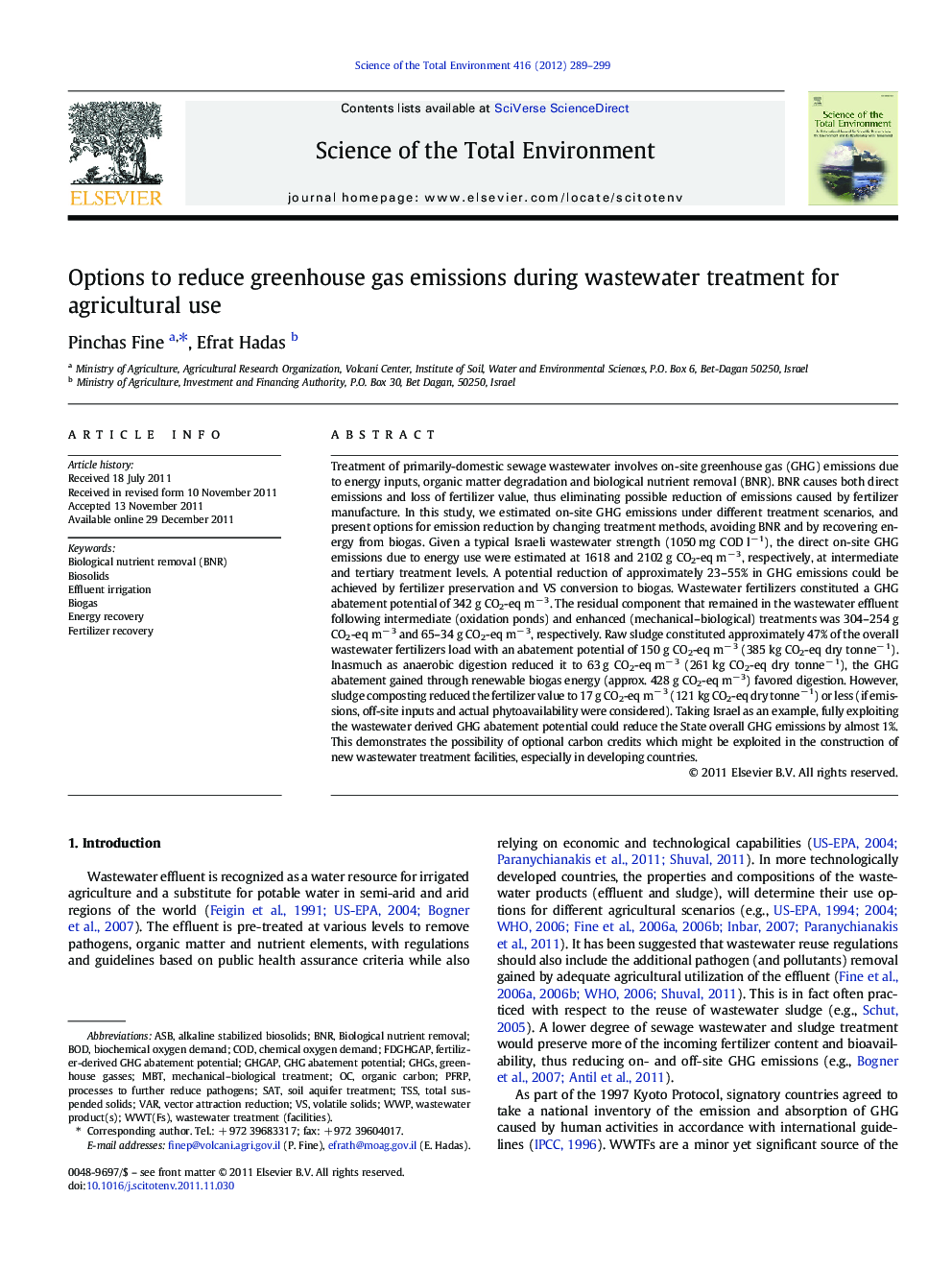| کد مقاله | کد نشریه | سال انتشار | مقاله انگلیسی | نسخه تمام متن |
|---|---|---|---|---|
| 4429830 | 1619833 | 2012 | 11 صفحه PDF | دانلود رایگان |

Treatment of primarily-domestic sewage wastewater involves on-site greenhouse gas (GHG) emissions due to energy inputs, organic matter degradation and biological nutrient removal (BNR). BNR causes both direct emissions and loss of fertilizer value, thus eliminating possible reduction of emissions caused by fertilizer manufacture. In this study, we estimated on-site GHG emissions under different treatment scenarios, and present options for emission reduction by changing treatment methods, avoiding BNR and by recovering energy from biogas. Given a typical Israeli wastewater strength (1050 mg COD l− 1), the direct on-site GHG emissions due to energy use were estimated at 1618 and 2102 g CO2-eq m− 3, respectively, at intermediate and tertiary treatment levels. A potential reduction of approximately 23–55% in GHG emissions could be achieved by fertilizer preservation and VS conversion to biogas. Wastewater fertilizers constituted a GHG abatement potential of 342 g CO2-eq m− 3. The residual component that remained in the wastewater effluent following intermediate (oxidation ponds) and enhanced (mechanical–biological) treatments was 304–254 g CO2-eq m− 3 and 65–34 g CO2-eq m− 3, respectively. Raw sludge constituted approximately 47% of the overall wastewater fertilizers load with an abatement potential of 150 g CO2-eq m− 3 (385 kg CO2-eq dry tonne− 1). Inasmuch as anaerobic digestion reduced it to 63 g CO2-eq m− 3 (261 kg CO2-eq dry tonne− 1), the GHG abatement gained through renewable biogas energy (approx. 428 g CO2-eq m− 3) favored digestion. However, sludge composting reduced the fertilizer value to 17 g CO2-eq m− 3 (121 kg CO2-eq dry tonne− 1) or less (if emissions, off-site inputs and actual phytoavailability were considered). Taking Israel as an example, fully exploiting the wastewater derived GHG abatement potential could reduce the State overall GHG emissions by almost 1%. This demonstrates the possibility of optional carbon credits which might be exploited in the construction of new wastewater treatment facilities, especially in developing countries.
► Sewage treatment causes GHGs emissions from energy inputs, organic matter degradation and biological nutrient removal.
► Changes of treatment methods and extent can reduce direct on-site GHG emissions by up to 55%.
► Wastewater treatment and products' fertilizer value should accommodate intended agricultural reuse.
► Exploiting the wastewater derived GHG abatement potential would reduce the State of Israel overall GHG emissions by ≈1%.
Journal: Science of The Total Environment - Volume 416, 1 February 2012, Pages 289–299